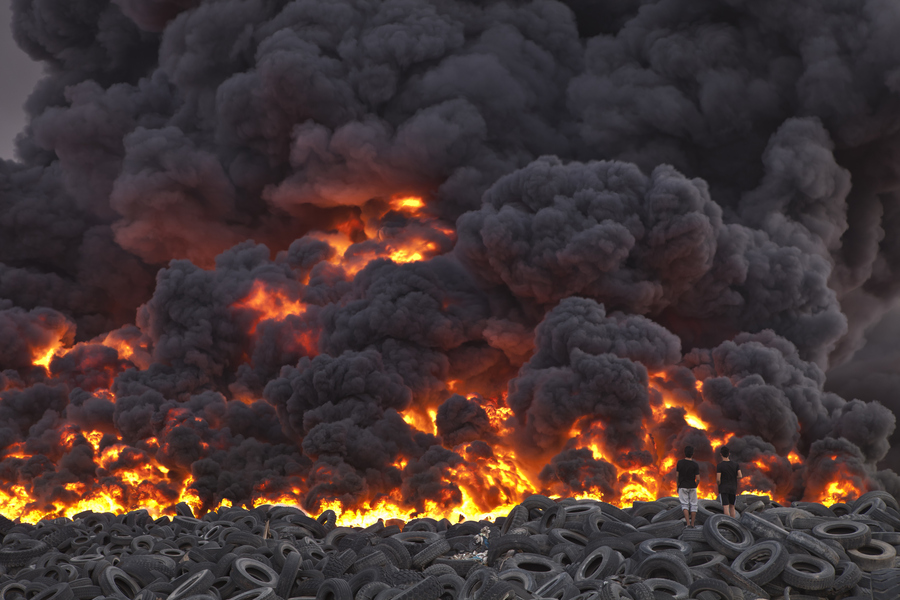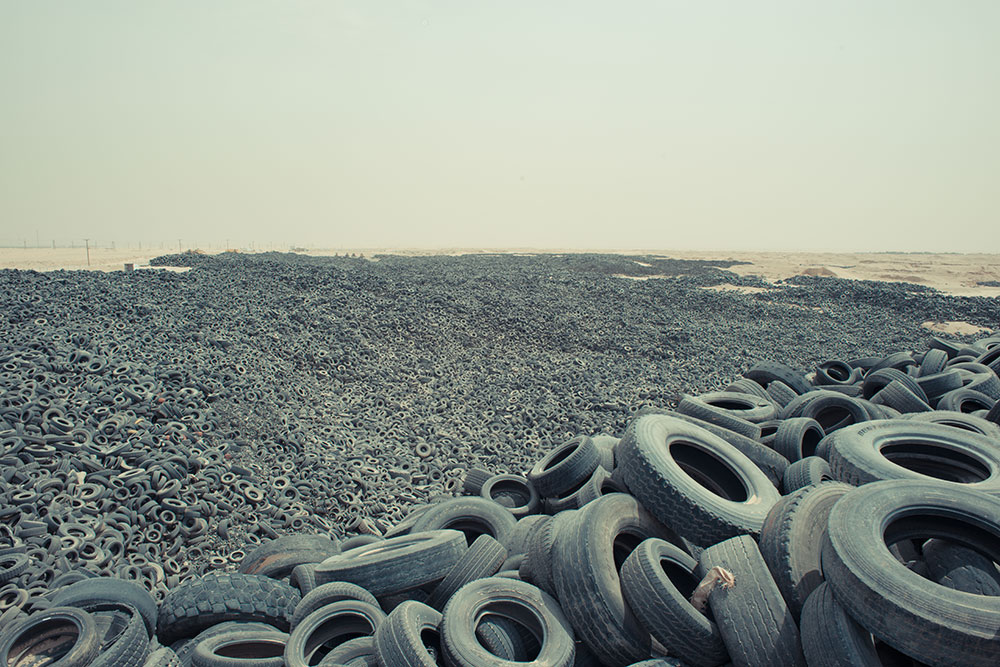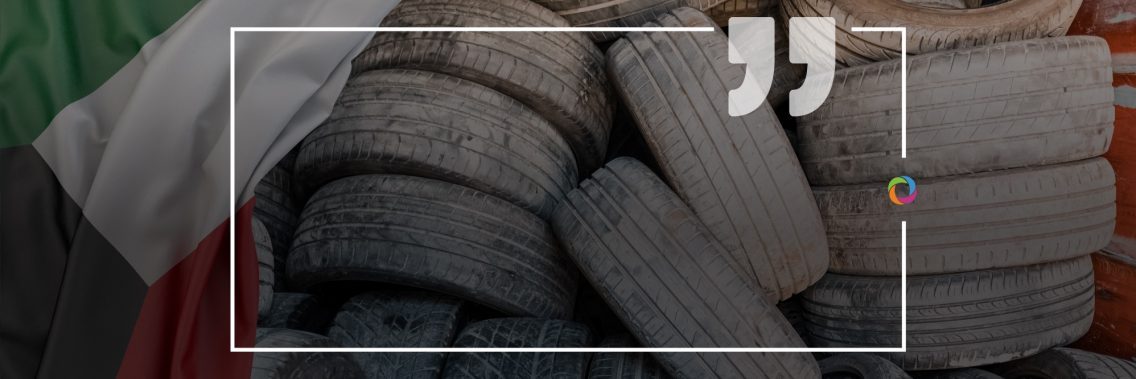Last week was marked by news that shook the entire planet: the world’s biggest tire graveyard in Kuwait (where over seven million tires are stored) was on fire which could have transformed into a global environmental disaster if not extinguished quickly. The fire was so widespread that it was visible by satellite. In this context, more and more people are asking why the storing of such combustible materials is permitted in a country where temperatures reach 50C. We approached some environmental experts to share their opinion regarding this ecological disaster.
What are your comments on this incident? What, in your opinion, were the main causes?

“The huge fire that broke out in one of the world’s biggest tire graveyards in Kuwait highlights the well-known, and generally neglected, problem posed by the accumulation of used tires in the environment. Even when they are not burnt, large quantities of old tires in landfills have negative impacts on the environment, either in soil and water pollution or in facilitating the establishment of invasive species such as the Asian tiger mosquito that reproduces in the still waters trapped in the millions of dumped tires.”

“Thick smoke from the fire at the six-acre facility was captured via satellite. Many have speculated that it was a shot of Kuwait’s famous Sulaibiya tire cemetery and shared satellite images of the site showing smoke billowing from the stockpile. Indeed, gigantic holes dug in the sandy soil in the region of Sulaibiya in Kuwait contain approximately seven million tires. Fires in Kuwait’s vast tire stocks are quite common.”

What are the biggest consequences of this accident?

“When massive tire graveyards are set on fire, the pollution consequences worsen by several degrees of magnitude: the smoke releases toxic chemicals such as CO and SOx that are deleterious to human health; heavy metals are released into the soil and reach the groundwater causing very serious pollution, often irreversible.”

“The used tire is unfortunately not biodegradable and is a source of pollution due to the chemical compounds it contains – soil pollution or atmospheric pollution, especially when it is burned. It is time to find a definitive solution to the management of used tires which remains a critical environmental problem for the reasons mentioned above. This problem does not only concern Kuwait but all the tire-producing countries and at other levels all user countries. Nowadays, attempts to resolve this problem are, among others, selling for export or on the second-hand market, retreading, use as-is for the agricultural sector, using as tire walls for anti-avalanche/rockfall, underlaying roads (walls of tires under the bitumen), combustion to provide raw material to certain industries (steel), grinding into aggregates or powder for various uses (roads, depreciation of railroads, playgrounds, etc.) and the production of molded objects (e.g., shopping trolley wheels). However, it seems that not all of the used tire mechanisms would be enough to sell off the ever-growing stock. Scientists, industry, and governments should be able to come together to find an effective and permanent solution.”

What should the international community do in this regard?

“At the local and immediate level, technical guidelines similar to those developed to reduce fire intensity and propagation speed in fire-prone forests should be adapted and implemented in large tire graveyards. For example, a network of linear firebreaks should be compulsory in tire graveyard areas in order to slow down the speed of fire propagation. Early detection and rapid response techniques should be implemented in order to rapidly locate the fire’s core so it can be stopped quickly. Better management and planning of the spatial accumulation of used tires can also significantly decrease the devastating outcomes of such fires.”
BACKGROUND:
The fire started on Wednesday, August 4th when thick smoke from the six-acre site was captured by satellite images. Fortunately, the smoke was blown away in the direction of the sea rather than inland otherwise it could have caused a global disaster. The Kuwaiti government has begun to work to address tire shortages. There is a plan in place to recycle 95% of tires and make room for new housing projects.

